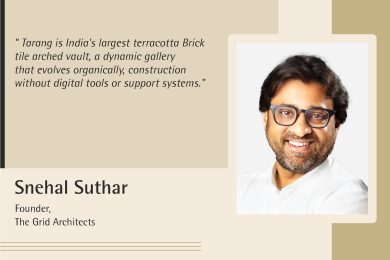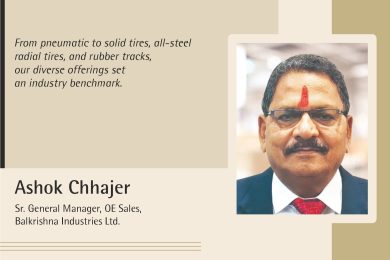This interaction presents Liquiclear’s cutting-edge water purification and softening solution, featuring state-of-the-art Liqui Deionization (LDI) technology.
Industry Speaks
Schueco offers monsoon-proof door and window systems with aesthetics
This conversation with Schueco India explores the concept of fenestration and their line of products engineered to withstand the challenges of the monsoon season, ensuring resilience in building construction.
CASE offers telematics integration and AI-assisted solutions
This interaction delves into how CASE integrates innovation into its product portfolio and anticipates future trends to shape the construction equipment industry.
Our revolutionary real-time monitoring and control tech enhances efficiency and productivity
ACE Update's interaction with V. G Sakthikumar, Chairman & Managing Director, Schwing Stetter India, delves into the advanced technology of construction equipment, incorporating innovation to enhance efficiency and performance.
Smart and bright LED revolution
This interaction delves into the advancements in LED technology for outdoor use, withstanding harsh climatic conditions, and its implementation in urban infrastructure.
Drythane solutions drive energy efficiency and prolong building lifespan
Drythane Waterproofing has emerged as a key player, driving significant growth with cutting-edge products engineered to surpass traditional solutions.
Parametric landscape designs
Studio Emergence extends its expertise in landscape architecture, defining the relations between structure and environment with a focus on parametric designs. Can you provide an overview of your experience working on landscaping projects and highlight some of the key projects you have been involved in? Studio Emergence pioneers the integration of parametric design in both […]
Bridging eras through sustainable beauty and artistic harmony
In a captivating dialogue with the visionary architects Snehal Suthar and Bhadri Suthar, the minds behind the architectural marvel Tarang, we delve into the essence of their creation. The projects Technical Guidance and structural form findings are by – “Sankalan.” and A centre of alternative learning is constructed by Artisans of – “So Hath-100 Hands” […]
Let’s talk about prestressed precast concrete
This interaction delves into the avant-garde precast prestressed concrete solutions offered by PRECA, unveiling the excellence, craftsmanship, and commitment to shaping a resilient tomorrow.
BKT highlights groundbreaking innovations at Excon 2023
Exploring the from pneumatic to solid tires, all-steel radial tires and rubber tracks; BKT has set a new standard with its diverse range of offerings.









